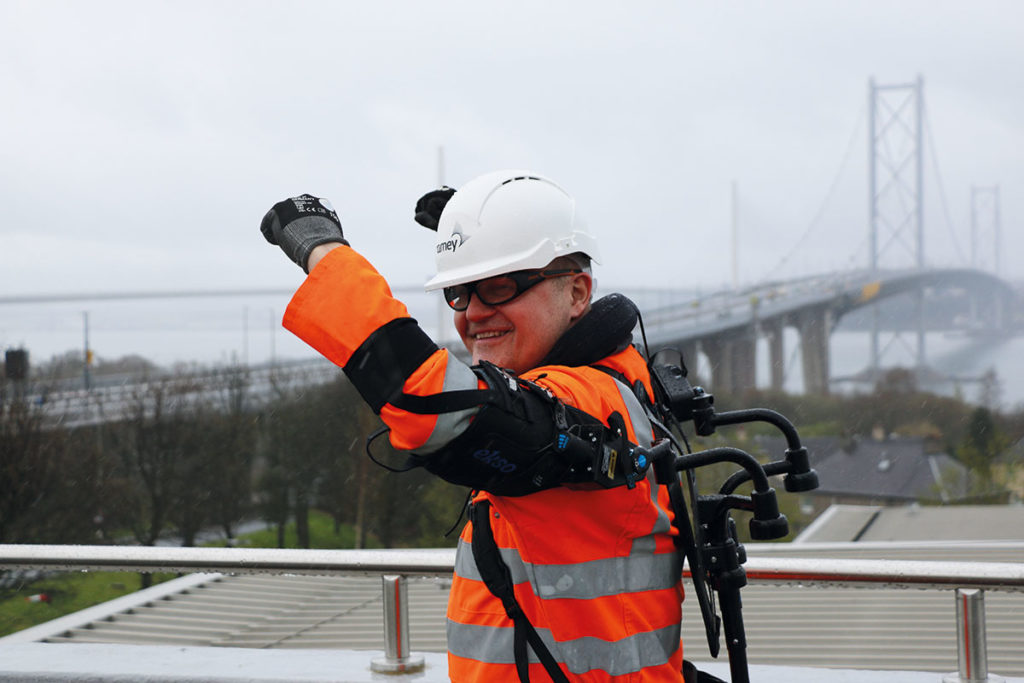
AMEY is trialling an innovative robotic exosuit with operatives working on Scotland’s Forth Bridges, with the aim of reducing the risks posed by manual handling tasks.
In partnership with Amey, Transport Scotland has purchased the suit. The EksoVest is an external metal frame that mirrors elements of the human skeletal structure. It is powered by a series of springs and supports workers’ arms to assist them with tasks ranging from chest height to overhead, providing between 2.2kg to 6.8kg of lift assistance per arm, making lifting objects easier.
The EksoVest has been designed to alleviate strain on operatives’ arms who are working on tasks above chest height. Weighing 4.3 kilogrammes, it is described as comfortable to wear in all conditions whilst still enabling users the freedom to move.
One of the employees who has trialled the kit was Blair Masterton, a rigger at the Forth Road Bridge. He said, “This is definitely a good piece of kit in the right work situation. It’s easy to put on and there is a slight assist when lifting staging boards and other heavy items.
“It feels a bit tight and can get in the way when wearing a harness, but this trial should hopefully help to identify areas where improvements can be made.”
Mark Arndt, operating company representative for the Forth Bridges Unit said, “Integrating technology into everyday tasks to reduce the risk of on-the-job injuries to my operatives, is the driving force behind trialling the EskoVest.
“The motorised skeletal vest not only has the capability to physically enhance the safety of our people, but it aims to lessen fatigue which will lead to an increase in productivity and a reduction in sickness absence. Our operatives have been wearing the vest to carry out a range of tasks including overhead grinding and welding to repair joints in the Forth Road Bridge, installing underdeck access, installing streetlighting and laying out and removing traffic management.
“These tasks require our operatives to manually handle weighted objects, so by providing them with a robotic vest that supports their skeletal structure and arms, I’m hoping that we can reduce the weight that they are managing and therefore the potential for injuries.”








